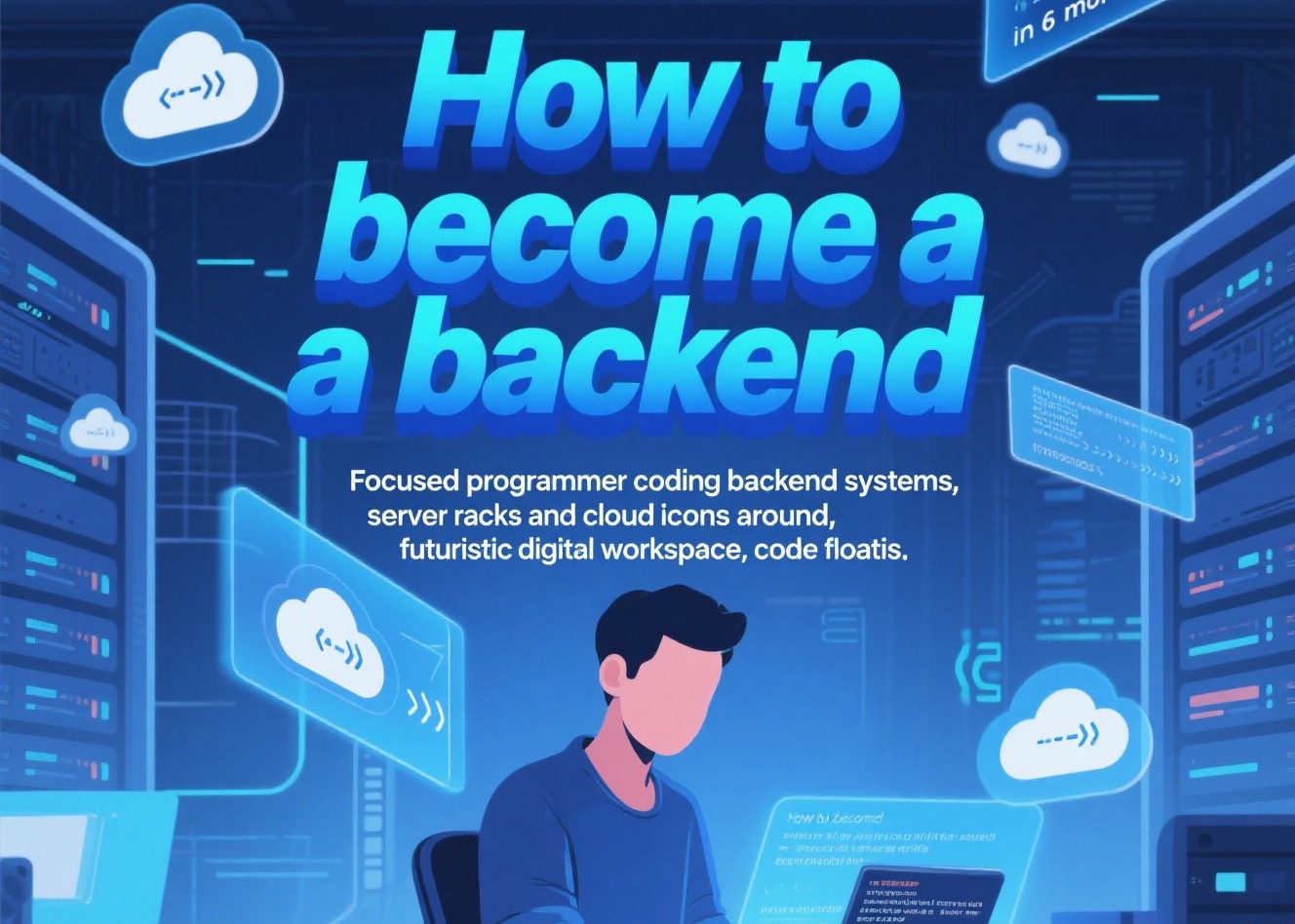
How to Become a Backend Developer in 6 Months (2025 Guide)
Backend developers are the architects of the web, building the logic, databases, and APIs that power apps and websites. If frontend development is about what users see, backend development is about how everything works behind the scenes.
The good news? With a structured plan, you can become a backend developer in just 6 months—even as a beginner. This guide breaks down the step-by-step roadmap to help you get there.
Month 1: Learn the Basics of Programming
Before diving into backend-specific tools, you need strong programming fundamentals.
✅ Focus on one language (commonly used in backend):
JavaScript (Node.js) – beginner-friendly and widely used
Python – great for APIs, automation, and fast development
Java – powerful for enterprise-level applications
Go or PHP – used in scalable apps and websites
💡 Key topics to learn:
Variables, loops, conditionals
Functions and data structures
Object-Oriented Programming (OOP)
Error handling and debugging
👉 Goal: Be comfortable writing small programs.
Month 2: Understand Databases
Every backend developer works with data. Learn how to store, retrieve, and manage information.
✅ Learn both types:
SQL databases: MySQL, PostgreSQL
NoSQL databases: MongoDB, Firebase
💡 Practice:
Create tables and relationships
Write queries (CRUD: Create, Read, Update, Delete)
Connect your programming language to a database
👉 Goal: Build a small app that saves and retrieves user data.
Month 3: Learn Backend Frameworks
Frameworks make backend development faster and more efficient.
✅ Depending on your language:
Node.js → Express.js
Python → Django or Flask
Java → Spring Boot
💡 Practice:
Create simple REST APIs
Handle HTTP requests (GET, POST, PUT, DELETE)
Connect your API to a database
👉 Goal: Build a basic CRUD API (example: To-do list app).
Month 4: Master Authentication & Security
Freelancers and companies alike require secure applications. Learn how to:
Implement user authentication (login/signup)
Use JWT (JSON Web Tokens) or OAuth
Hash passwords securely
Prevent common attacks (SQL injection, XSS, CSRF)
👉 Goal: Build a secure user login system.
Month 5: Work with APIs & Cloud
Most backend jobs involve integrations and deployments.
✅ Learn:
REST APIs & GraphQL
API documentation (Swagger/Postman)
Cloud basics: AWS, Google Cloud, or Azure
Deployment with services like Heroku, Vercel, or Docker
👉 Goal: Deploy your app online so anyone can access it.
Month 6: Build Real Projects & Apply for Jobs
Now it’s time to put everything together. Build portfolio projects that prove your skills.
💡 Project Ideas:
Blog platform with user login
E-commerce backend with cart & payment system
Chat application API
Task manager with authentication
✅ Don’t forget to:
Push code to GitHub
Write README files and documentation
Apply for junior backend developer jobs or internships
👉 Goal: Have 2–3 solid projects you can showcase to employers.
Skills Every Backend Developer Should Master
A programming language (JavaScript, Python, Java, etc.)
Databases (SQL & NoSQL)
APIs (REST, GraphQL)
Authentication & security practices
Version control (Git, GitHub)
Deployment & cloud hosting
Conclusion
Becoming a backend developer in 6 months is achievable with the right plan. Follow this roadmap:
Learn programming basics (Month 1)
Master databases (Month 2)
Build APIs with frameworks (Month 3)
Add authentication & security (Month 4)
Learn APIs & cloud deployment (Month 5)
Build projects & apply for jobs (Month 6)
👉 By the end of this journey, you’ll have the skills, projects, and confidence to start a career as a backend developer in 2025.
FAQs
Q1: Do I need a CS degree to become a backend developer?
No. Many backend developers are self-taught or come from bootcamps. Skills and projects matter more than degrees.
Q2: How much does a backend developer earn?
Entry-level backend developers can earn between $50,000–$80,000/year, with experienced developers making over six figures.
Q3: Can I become a backend developer without frontend knowledge?
Yes, but basic frontend (HTML, CSS, JavaScript) helps you understand how backend and frontend connect.
Q4: What’s the best backend language for beginners?
JavaScript (Node.js) or Python are beginner-friendly and widely used in the industry.
